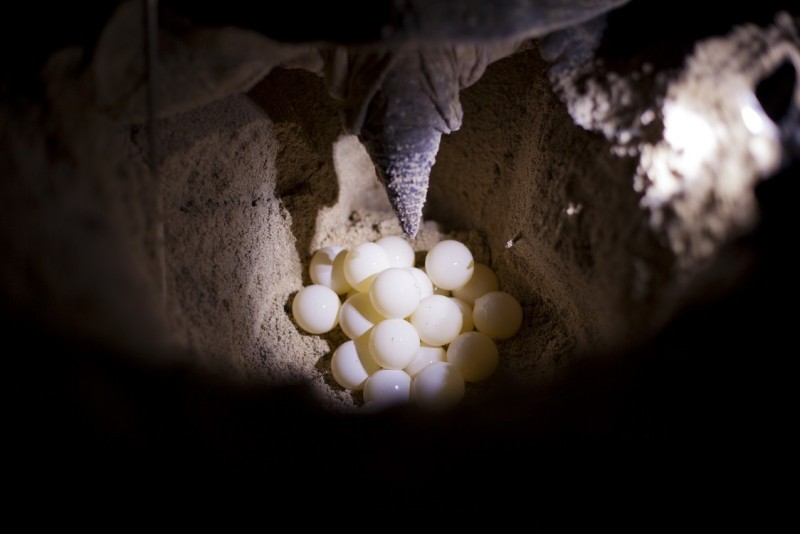Do not refresh or close this window.

Do not refresh or close this window.


Share
Cayman Turtle Centre is celebrating the first turtle nest of the season. In the wild, Green sea turtle nesting season in the Cayman Islands usually doesn’t begin until late April, so the new nest, at the beginning of March, is a great sign that the conditions in the big Breeder Pond are just right for turtles. The 281 mature adult turtles in the Breeding Pond were given a health check during the recent annual breeder turtle survey and were reported as doing very well, with all of the turtles in tip-top health.
“It looks as if it’s going to be another great year for turtle eggs,” said the Centre’s Chief Executive Officer Tim Adam. “That means a great year for turtle conservation too, because many of the eggs that will be laid here will become hatchlings for our release programme,” Mr. Adam continued. “A recent study by the University of Barcelona with the Cayman Island Department of Environment has shown that our release programme has made a huge contribution to the massive increase in wild turtle numbers around the Cayman Islands, from just a few nests 20 years ago to more than 600 today,” continued Mr. Adam. The same study found that ninety percent of green turtles nesting in the wild in Cayman are related to the turtles at the Centre.
Each year the huge breeder turtles, some of which have been with the Cayman Turtle Centre ever since its inception, mate and at nightfall, lay their eggs on the sandy ‘beach’ area at the side of a pond that is nearly half the size of a football pitch. Those eggs are laid in clutches of 100 to 150 at the bottom of deep holes that each female digs in the sand before covering them over. The eggs are then carefully removed at night by the Centre’s crew members, and taken to the Hatchery in the Education Centre. The eggs are kept in an optimal environment to ensure that, when the turtle hatchlings emerge after two months, they are given the best possible start in life. In the Hatchery, visitors to the Centre have the thrill of watching some of the hatchlings emerge from their eggs, which are at the bottom of tall, sand-filled columns, which replicate the natural conditions of a nest on a sandy beach.
Mr. Adam said, “With the good start to nesting we are looking forward to a very active year of nest implantations and egg translocations on beach front accommodation properties. This is one of our green turtle release programmes. It is a way of introducing captive-bred green turtle eggs into the wild, by replicating, as carefully as possible, a real-life green sea turtle nest on the beaches of Grand Cayman.” The process involves taking a portion of the eggs from a clutch incubated in the Centre’s Hatchery until they are just a few days from hatching. These eggs are brought to a specially selected Grand Cayman beach to be placed in the nest which is created in the sand.
The public is able to sign up for live WhatsApp updates on when the turtle hatchlings are getting ready to emerge. At the first sighting of hatchlings at the top of the nest in the sand subscribers to the updates will be notified and then have the opportunity to a front row seat to the miracle of seeing hatchlings make their way into the wild. Mr. Adam finished by saying, “Imagine the memorable and awe-inspiring experience a visitor to the Cayman Islands will have, being able to see a real time hatchling turtle emergence from a nest on their visit. And of course, the conservation and education benefits are far reaching. Each person will tell other people and encourage them to protect turtle, and when you protect a keystone species such as turtles you protect entire ocean eco-systems.”
For more information, call the Cayman Turtle Centre: Island Wildlife Encounter on 345-949-3894, email us at info@turtle.ky, visit us online at www.turtle.ky or find us on Facebook at https://www.facebook.com/CaymanTurtleCentre/.